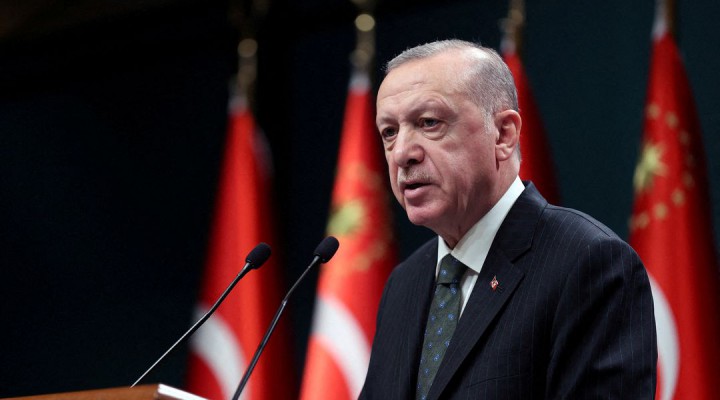Erdoğan’s New Turkey

A stronger eastward tilt and reconciliation with Arab adversaries
By electing President Recep Tayyip Erdoğan to a third five-year term, a majority of Turkish voters opted for both ‘stability’ and ‘change’: stability in government, and the change in regional policy that Erdoğan has been pursuing since the failed 2016 military coup and after discovering that the US-controlled Incirlik airbase played a big role in the planning, incitement, and execution of the putsch.
This is completely different to the ‘change’ advocated by the Turkish opposition led by Kemal Kılıçdaroğlu and his coalition partners. It entails turning away from the US and the Western alliance it leads and towards the new world order led by China and Russia and including the BRICS grouping and the Shanghai Cooperation Organization.
This amounts to a reversion to the new regional and economic policies adopted by the Justice and Development Party (AKP) under Erdoğan’s leadership when he first came to power in 2002, before the US lured him into the trap of the so-called Arab Spring and military intervention to overthrow various Arab regimes and governments.
Erdoğan has four major domestic challenges to contend with in the coming period and others on the region and international fronts:
The first is the vertical schism in Turkish society reflected in the presidential election results. The opposition made a major advance by narrowing the gap with the ruling party to less than five points, and could well resort to staging a succession of protests in the coming months to destabilise the situation.
The second is the economic crisis facing the country, with inflation high (around 55%), the lira plummeting in value (to more than 20 to the dollar), and foreign debt of nearly half a trillion dollars.
The third challenge is the migration issue and the presence of about six million migrants, including 3.5 million Syrian refugees. The opposition coalition successfully exploited this issue in its election campaigning to appeal to the nationalist far right.
The fourth challenge is reconstruction after the recent earthquake and compensating the victims. The approach taken by Erdoğan so far seems to have made some headway, as evidenced by the fact that 60% of voters in the stricken areas backed him.
The US wagered on the opposition winning in the presidential elections and badly lost its bet. It was desperate to achieve its main goal of distancing Turkey from China and Russia and bringing it back fully into its fold. The reverse happened. With his re-election, Erdoğan received a popular mandate to continue his policies of rapprochement with the Sino-Russian axis, repairing and strengthening relations with Syria and Iran, and restoring them to their pre-Arab Spring norm or better.
It is no secret that the recent rounds of Russian- and Iranian-sponsored meetings between the Turkish and Syrian foreign and defence ministers have laid the foundations for Turkish-Syrian reconciliation at all levels.
When I met President Bashar al-Asad in Damascus two weeks ago, he expressed confidence that Erdoğan would win the presidential run-offs. He gave the impression that, while pursuing a ‘zero problems’ policy with all his Arab adversaries, he aspires to turn a new leaf with Turkey and is wary and mistrustful of the Turkish opposition because of its leader’s pro-US proclivities and hostility towards Russia, China, and Iran. That is why Asad turned a deaf ear to the Turkish opposition’s overtures, Kılıçdaroğlu’s request to pay a pre-election visit to Damascus, and his declared offers to contribute to Syria’s reconstruction and compensate it for expediting the return of Syrian refugees.
The key provision of the secret agreements reached in the Moscow talks attended by the Syrian and Turkish ministers involved Russian and Iranian guarantees of the withdrawal of Turkish forces from Syrian territory after the presidential elections are won, an outcome the Syrian president seemed confident of.
A Syrian-Turkish presidential summit, perhaps with the Russian and Iranian presidents in attendance, could follow if Turkey makes good on its promise to start withdrawing troops and revert to the 1998 Adana Agreement on border security. These would be the twin pillars of a historic reconciliation that Erdoğan — who is turning into one of Russia’s strongest allies and the US’ biggest foes — seems not only committed to but enthusiastic about. Among the outcomes he hopes for are the return of Syrian refugees to their homeland and an influx of Gulf investment to support the Turkish economy.
The New Turkey that is taking shape will be markedly different to pre-election Turkey. with a stronger eastward orientation and improved ties with Syria, Saudi Arabia, Iran, and Egypt in addition to Algeria, Tunisia, and Libya in North Africa.
https://www.raialyoum.com/erdogans-new-turkey/
 TheAltWorld
TheAltWorld 
0 thoughts on “Erdoğan’s New Turkey”